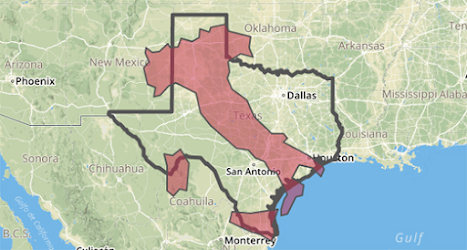This 3D Map of world cities with a population over 100k visualizes the global population of the world's cities as 3D towers. Zoom in on Europe and you can see that London dominates western Europe, towering over Paris, Madrid, Berlin and Rome.
The data for the map comes from this Wikipedia list of towns and cities with 100,000 or more inhabitants. Wherein lies the problem. The main problem with this Wikipedia list is that there is no universally agreed standard for defining city borders and boundaries. For example Greater London is around 1,569 km² while Paris is around 105.4 km². So the London tower on this interactive map encompasses the population of an area over ten times as large as the population represented by the Paris tower. No wonder the London tower dwarfs the Paris population tower.
In reality the population density in central Paris is far higher than that of inner London. Which is why it is much better to actually map population density rather than population totals. For example look at this population density map of Europe created by The Pudding.
If you look at Europe on this map you can see that central Paris and Barcelona have much higher population densities than central London. Of course London makes up for this with the huge numbers of people living in the huge urban sprawl outside the city center.
The Pudding's Human Terrain interactive map shows population density across the globe using 3D population pyramids. The taller a pyramid block on The Pudding map then the more people are living there.
The data for the Human Terrain map comes from the Global Human Settlement Layer. This data from the European Commission looks at the population living within 1 km² areas, 'regardless of administrative boundaries'. It is therefore a much better guide of the actual population density within cities.
The use of population pyramids is a well used and visually dramatic way to show population density. For example The Pudding's map is very similar to a WebGL powered map created by Topi Tjukanov to show the density of Europe's population.
















































